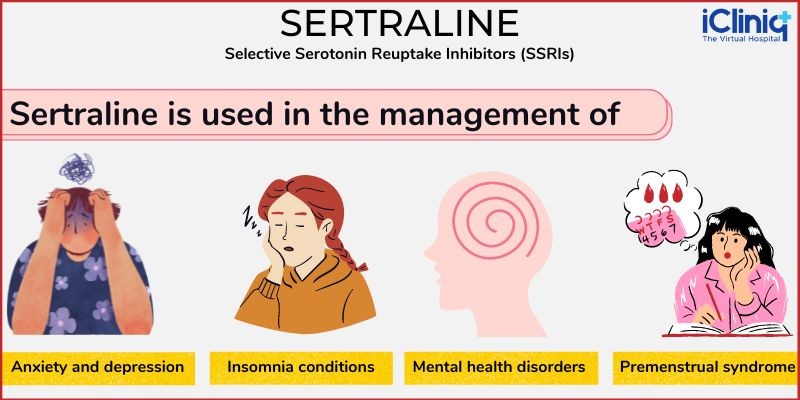
Contents
Zoloft (sertraline) vs. Paxil (paroxetine)
Zoloft (sertraline) is a selective serotonin reuptake inhibitor (SSRI) antidepressant used to treat depression, obsessive-compulsive disorder (OCD), post-traumatic stress disorder (PTSD), social anxiety disorder, panic disorder, and premenstrual dysphoric disorder (PMDD). Other SSRIs include paroxetine (Brisdelle, Paxil, Paxil CR, Pexeva), citalopram (Celexa), fluoxetine (Prozac, Sarafem), and fluvoxamine (Luvox CR). Depression may be caused by disturbances in the balance between serotonin and other neurotransmitters. Zoloft restores this balance among neurotransmitters in the brain by blocking the reuptake of serotonin, changing its levels.
Paxil (paroxetine) is a selective serotonin reuptake inhibitor (SSRI) antidepressant used to treat depression, OCD, PTSD, PMDD, and social anxiety disorder. Other SSRIs include fluoxetine (Prozac), citalopram (Celexa), and sertraline (Zoloft). Paxil affects the neurotransmitter serotonin in the brain. An imbalance among neurotransmitters is believed to be the cause of depression. Paxil works by preventing the reuptake of serotonin by nerve cells after its release, increasing free serotonin levels that stimulate nerve cells in the brain.
QUESTION
What are the side effects of Zoloft and Paxil?
Zoloft
WARNING
- Antidepressants increased the risk of suicidal thinking and behavior in children and adolescents with depression and other psychiatric disorders. Consider the risk and clinical need when using Zoloft or any other antidepressant in a child or adolescent. Patients who start therapy should be closely observed for clinical worsening, suicidal thoughts, or unusual changes in behavior.
The most common side effects of Zoloft are:
- Sleepiness
- Nervousness
- Insomnia
- Dizziness
- Nausea
- Tremor
- Skin rash
- Constipation
- Upset stomach
- Loss of appetite
- Headache
- Diarrhea
- Abnormal ejaculation
- Decreased interest in sexual activity
- Dry mouth
- Increase in sweating (diaphoresis)
- Weight loss
Possible serious side effects of Zoloft include:
- Irregular heartbeats
- Serious allergic reactions
- Worsening of depression
- Serotonin syndrome
- Hyponatremia
- Abnormal bleeding
- Priapism (prolonged erection)
- Decreased liver function
- Suicidality
- Activation of mania in patients with bipolar disorder
Important side effects are irregular heartbeats, allergic reactions, and activation of mania in patients with bipolar disorder.
If Zoloft is discontinued abruptly, some patients experience side effects such as:
A gradual dose reduction of Zoloft is recommended when therapy is discontinued.
Paxil
WARNING
- Antidepressants increased the risk of suicidal thinking and behavior in children and adolescents with depression and other psychiatric disorders. Consider the risk and clinical need when using Paxil or any other antidepressant in a child or adolescent. Patients who start therapy should be closely observed for clinical worsening, suicidality, or unusual changes in behavior.
Common side effects of Paxil are:
Other important side effects include:
- Increased blood pressure
- Seizures
- Sexual dysfunction
Some patients may experience withdrawal reactions upon stopping Paxil. Symptoms of withdrawal include:
The dose of paroxetine should be gradually reduced when therapy is discontinued.
What is the dosage of Zoloft vs. Paxil?
Zoloft
The recommended dose of Zoloft is 25 to 200 mg once daily. Treatment of depression, OCD, panic disorder, PTSD, and social anxiety disorder is initiated at 25 to 50 mg once daily. Doses are increased at weekly intervals until the desired response is seen.
The recommended dose for PMDD is 50 to 150 mg every day of the menstrual cycle or for 14 days before menstruation.
Sertraline may be taken with or without food.
Paxil
The recommended dose is 20 to 60 mg daily of immediate-release tablets or 12.5 to 75 mg daily using controlled-release tablets. Paxil is given as a single daily dose, usually in the morning. The full effect may not occur until after a few weeks of therapy.
Doses for obsessive-compulsive disorders and panic disorders are often higher. Doses are adjusted to find the optimal dose.
Elderly patients, debilitated persons, and patients with certain kidney or liver diseases may need lower doses because they metabolize and eliminate Paxil more slowly.
What drugs interact with Zoloft and Paxil?
Zoloft
All SSRIs, including Zoloft, should not be taken with any of the monoamine oxidase inhibitor (MAOI) class of antidepressants, for example isocarboxazid (Marplan), phenelzine (Nardil), tranylcypromine (Parnate), selegiline (Eldepryl, Emsam, Elazar), and procarbazine (Matulane). Other drugs that inhibit monoamine oxidase include linezolid (Zyvox) and intravenous methylene blue. Such combinations may lead to confusion, high blood pressure, tremor, hyperactivity, coma, and death. A period of 14 days without treatment should lapse when switching between Zoloft and MAOIs. Similar reactions occur when Zoloft is combined with other drugs (e.g., tryptophan, St. John’s wort, meperidine, tramadol) that increase serotonin in the brain. Cimetidine may increase the blood levels of Zoloft. Zoloft also increases the blood level of pimozide, leading to potential heart problems. The effect of warfarin should be monitored when starting or stopping Zoloft.
Paxil
All SSRIs, including Paxil, should not be taken with any of the monoamine oxidase inhibitor (MAOI) class of antidepressants — for example, isocarboxazid (Marplan), phenelzine (Nardil), tranylcypromine (Parnate), selegiline (Eldepryl, Carbex), and procarbazine (Matulane) — or other drugs that inhibit monoamine oxidase such as linezolid (Zyvox) and intravenous methylene blue. Such combinations may lead to confusion, high blood pressure, tremor, hyperactivity, coma, and death. Similar reactions occur when Paxil is combined with other drugs (e.g., tryptophan, St. John’s wort, meperidine, tramadol) that increase serotonin in the brain. Paxil may increase the effect of warfarin, leading to excessive bleeding. Combining Paxil with drugs affecting bleeding may increase the likelihood of upper gastrointestinal bleeding. Phenytoin and phenobarbital may decrease the amount of Paxil in the body and reduce its effectiveness.
Are Zoloft and Paxil safe to use while pregnant or breastfeeding?
Zoloft
- Use of Zoloft during the third trimester of pregnancy may lead to adverse effects in the newborn.
- Use of Zoloft by nursing mothers has not been adequately evaluated.
Paxil
- Use of Paxil during pregnancy may result in congenital heart defects. Paxil should not be administered to pregnant women unless the need justifies the risk.
- Paxil is secreted in breast milk. Mothers taking Paxil should consider not breastfeeding.


